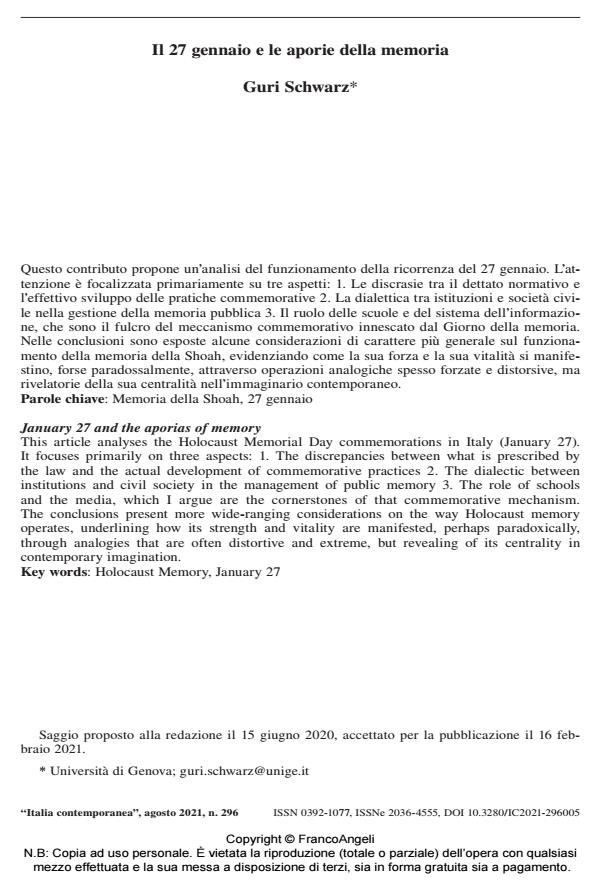Il 27 gennaio e le aporie della memoria
Journal title ITALIA CONTEMPORANEA
Author/s Guri Schwarz
Publishing Year 2021 Issue 2021/296
Language Italian Pages 24 P. 100-123 File size 199 KB
DOI 10.3280/IC2021-296005
DOI is like a bar code for intellectual property: to have more infomation
click here
Below, you can see the article first page
If you want to buy this article in PDF format, you can do it, following the instructions to buy download credits

FrancoAngeli is member of Publishers International Linking Association, Inc (PILA), a not-for-profit association which run the CrossRef service enabling links to and from online scholarly content.
This article analyses the Holocaust Memorial Day commemorations in Italy (January 27). It focuses primarily on three aspects: 1. The discrepancies between what is prescribed by the law and the actual development of commemorative practices 2. The dialectic between institutions and civil society in the management of public memory 3. The role of schools and the media, which I argue are the cornerstones of that commemorative mechanism. The conclusions present more wide-ranging considerations on the way Holocaust memory operates, underlining how its strength and vitality are manifested, perhaps paradoxically, through analogies that are often distortive and extreme, but revealing of its centrality in contemporary imagination.
Keywords: Holocaust Memory, January 27
- Recounting Mussolini: the narrative of Fascism between memory and popular culture Alessio Gagliardi, in Journal of Modern Italian Studies /2024 pp.303
DOI: 10.1080/1354571X.2024.2342084 - Languages of Discrimination and Racism in Twentieth-Century Italy Marcella Simoni, Davide Lombardo, pp.1 (ISBN:978-3-030-98656-8)
- Le leggi razziali e il fascismo in provincia (ISBN:979-12-215-0291-6)
Guri Schwarz, Il 27 gennaio e le aporie della memoria in "ITALIA CONTEMPORANEA" 296/2021, pp 100-123, DOI: 10.3280/IC2021-296005